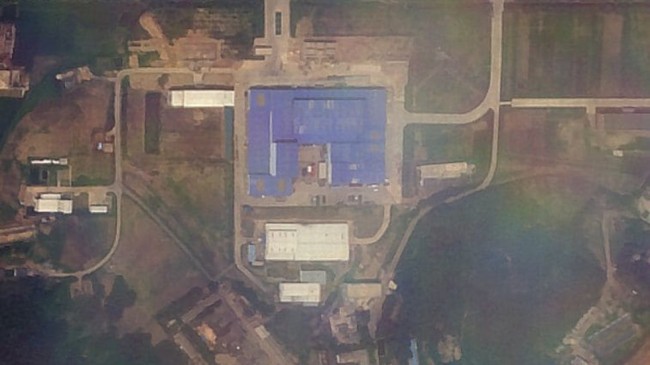US spy agencies have detected signs of North Korea building new intercontinental ballistic missiles at a plant near Pyongyang, the Washington Post reported Monday.
Citing unnamed officials familiar with the intelligence, the US daily said that newly obtained evidence, including satellite photos taken in recent weeks, suggests that North Koreans were working on at least one and possibly two liquid-fueled ICBMs at a large research facility in Sanumdong on the outskirts of Pyongyang.
The Sanumdong factory had produced two of North Korea’s ICBMs including the Hwasong-15, which is theoretically capable of reaching the US East Coast.
 |
This commercial satellite image shows North Korea’s Sanumdong missile assembly facility south of Pyongyang on July 7. (Reuters) |
Imagery gathered by the US National Geospatial-Intelligence Agency indicates ongoing work on at least one Hwasong-15 at the plant, according to the Washington Post.
The Post noted that the new intelligence does not hint at an expansion of North Korea’s capabilities but shows that the country is continuing to work on advanced weapons weeks after US President Donald Trump declared on Twitter that Pyongyang was “no longer a nuclear threat.”
Since late last month, a series of US intelligence reports indicating that the North is increasing the production of enriched uranium, a key component for nuclear weapons, have been leaked to the US media.
US Secretary of State Mike Pompeo also acknowledged during a Senate testimony on July 25 that North Korean factories “continue to produce fissile material” used in making nuclear weapons, although he declined to say whether Pyongyang is building new missiles.
During a historic summit with Trump in June, North Korean leader Kim Jong-un vowed to “work toward” the denuclearization of the Korean Peninsula.
Intelligence collected by US agencies showed, however, that senior North Korean officials have discussed plans to deceive Washington about the number of nuclear warheads and missiles they possess, as well as the types and number of facilities, and to rebuff international inspectors, according to the Post.
Their schemes include potentially claiming that they have completely denuclearized by declaring and disposing of 20 warheads while keeping dozens more, the Post wrote.
A nonprofit group in California called the James Martin Center for Nonproliferation Studies recently published images of a large industrial facility that some US intelligence analysts believe is the Kangson uranium enrichment plant.
The football-field-size building surrounded by a high wall and high-rise residential towers was externally completed by 2003, according to historical satellite photos, and US intelligence agencies believe it has been operational for at least 10 years.
Some European intelligence officials do not believe that the Kangson site is used for uranium enrichment, but many US agencies agree that Kangson is one of at least two secret enrichment plants, according to the Post.
In recent months, US agencies have raised their estimates of the size of North Korea’s nuclear arsenal.
The Post mentioned that workers were seen dismantling an engine test stand at the Sohae Satellite Launching Station on the North’s west coast, but noted that many experts see it as a symbolic gesture as Pyongyang has successfully launched ICBMs that use the kind of liquid-fueled engines tested at Sohae.
In addition to US agencies, independent missile experts also reported observing activity consistent with missile construction at the Sanumdong factory, such as the daily movement of supply trucks and other vehicles.
The Sanumdong site is “active,” according to Jeffrey Lewis, director of the East Asia Nonproliferation Program at CNS.
“We see shipping containers and vehicles coming and going,” Lewis was quoted as saying by the Post.
“This is a facility where they build ICBMs and space-launch vehicles.”
A photo taken on July 7, for instance, shows a bright-red covered trailer in a loading area, which appears identical to those used by North Korea in the past to transport ICBMs.
By Kim So-hyun (
sophie@heraldcorp.com)








![[Today’s K-pop] Blackpink’s Jennie, Lisa invited to Coachella as solo acts](http://res.heraldm.com/phpwas/restmb_idxmake.php?idx=644&simg=/content/image/2024/11/21/20241121050099_0.jpg)